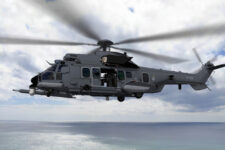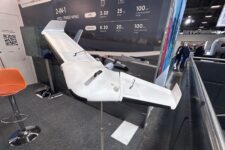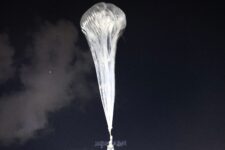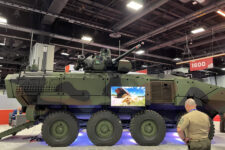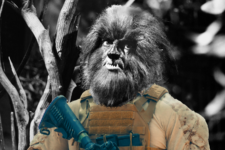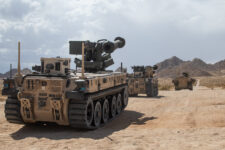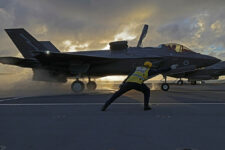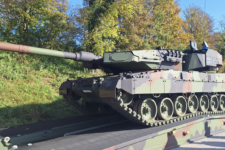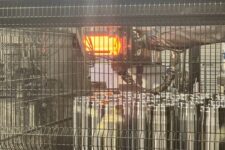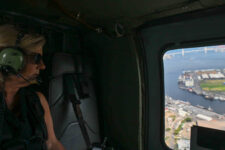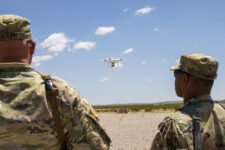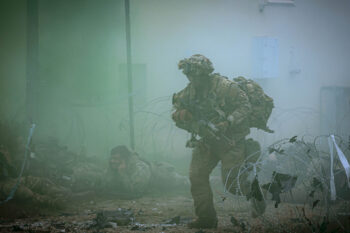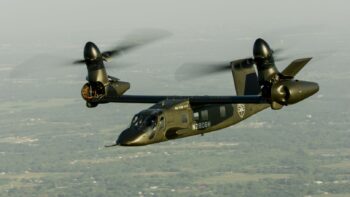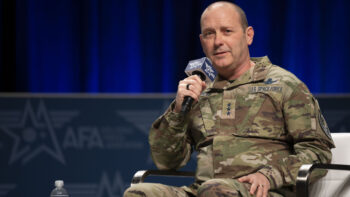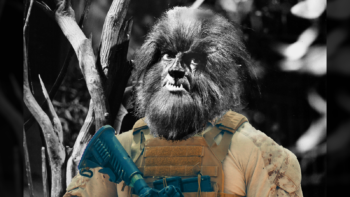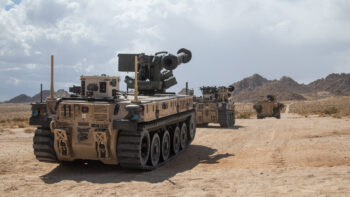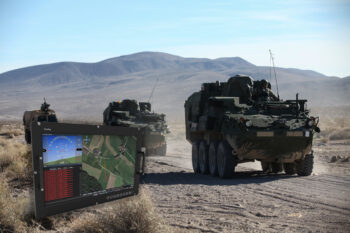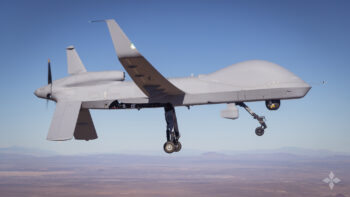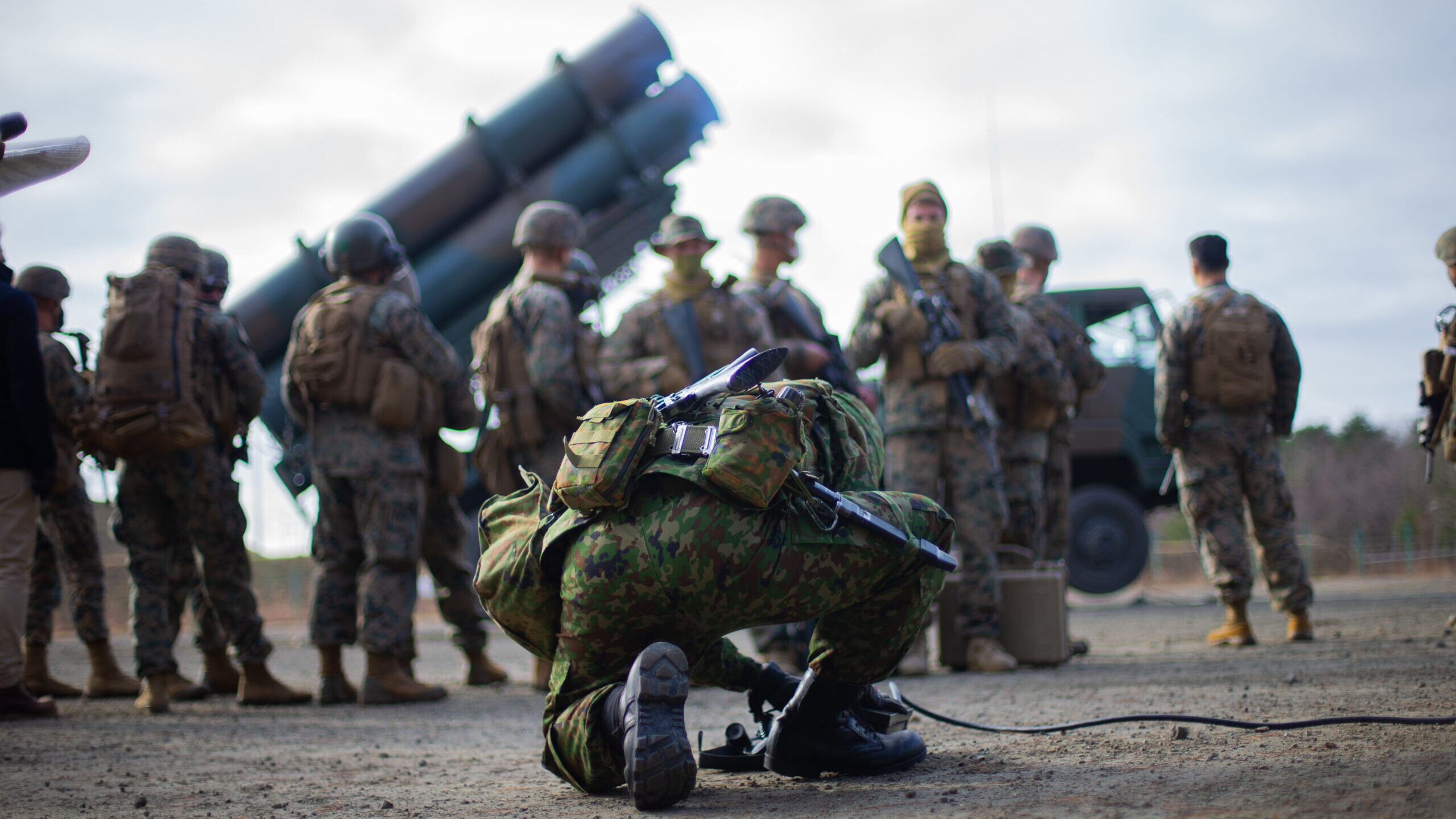
A Japanese soldier assembles a communications system as part of a launching unit fire mission drill during Resolute Dragon in Camp Hachinohe. (U.S. Marine Corps photo by Lance Cpl. Jonathan Willcox).
WASHINGTON: Thousands of US Marine Corps personnel in Japan are working alongside their Japanese counterparts to test the service’s concept for expeditionary basing and preparing the command and control structures used between the allied militaries.
It’s practice that will come in handy during a much larger military exercise planned for next year, according to a Marine commander involved in the ongoing US-Japanese training events.
“This is INDO-PACOM’s stand-in force showcasing, validating and testing the EABO concept,” Col. Matthew Tracy, commanding officer for 4th Marine Regiment, a unit that has several hundred infantrymen participating in Exercise Resolute Dragon 2021, told Breaking Defense in an interview last week.
EABO refers to the Marine Corps’ concept of operation Expeditionary Advanced Basing Operations, which envisions Marines setting up multiple smaller, easily-built bases across a battlespace.
Tracy said the Marines and the Japanese have established 12 expeditionary bases across “four islands that stretch really from jungle warfare training center in the northern part of Okinawa all the way up to Yausubetsu.” Okinawa is located at the southern tip of Japan, while Yausubetsu is more than 1,800 miles away at the most northwestern tip of the country.
“We’re going to work the kill chain and then I think even more importantly, is this idea of the decision chain,” Tracy said during an interview. “So, as a stand-in force, we’re not going to be operating alone, right? This is Japanese airspace, Japanese sovereign territory.”
The colonel said part of the exercise’s purpose is to rehearse how American and Japanese chains of command will be integrated and structured while conducting joint operations. He also said the Marines would take the experience gained from Resolute Dragon and use it during Indo-Pacific Command’s larger, joint force Keen Edge exercise next year.
“We’re going to take these lessons learned, turn it around, and … INDO-PACOM will be hosting an operational level of war…They’ll try and do what we’re doing at the tactical level, Pacific wide,” Tracy said. “This sets us up very well to really have a leap forward in our capabilities to defend islands in the Japanese archipelago by the springtime.”
Resolute Dragon is a conglomerate of exercises between 3rd Marine Division and the 9th Division of the Japanese Army taking place all over the island country from Dec. 4 to Dec. 17. It will include 2,600 US Marines, sailors and civilians as well 1,400 Japanese personnel. Tracy added that there are additional personnel supporting the exercise remotely from other parts of the Pacific as well as the continental US. The exercise represents the largest conducted between US and Japanese military forces since 2013.
In terms of capabilities, Resolute Dragon will include MV-22B Ospreys, CH-53E Stallions, AH-1Z Vipers, UH-1Y Venom, F/A-18E Hornets, and KC-130J Hercules, according to a Marine Corps statement.
The Marines and Japanese army, alongside US Navy ships, will set up fictional scenarios where all three forces will detect and engage targets with a High Mobility Artillery Rocket System. Other exercises will include urban infantry combat operations, joint refueling exercises and simulated mass casualty medical training.
The upcoming, larger Pacific-wide exercise, Keen Edge, is directed by the Joint Chiefs of Staff and usually takes place in the Indo-Pacific once every two years. It generally incorporates personnel from across the US services as well as the Japanese Self-Defense Force.
Army’s FLRAA fuselage production staying in Kansas, Bell announces
Bell Textron has “a lot of experience with composite fuselages, and so they’re going to use their experience to potentially design it … more modular,” Brig. Gen. David Phillips told Breaking Defense.


